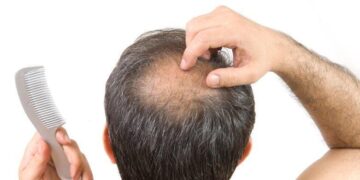When it comes to maintaining a glowing and healthy complexion, facial treatments are a popular choice. Among the many options available, HydraFacial and traditional facials stand out as two of the most sought-after treatments. But which one is right for you? In this post, we’ll compare HydraFacial and traditional facials, exploring their benefits, differences, and what to expect during each treatment.
What is a HydraFacial?
HydraFacial is a non-invasive, multi-step facial treatment that uses a patented device to deliver exfoliation, cleansing, extraction, and hydration to the skin. Unlike traditional facials, HydraFacial is known for its ability to improve the appearance of the skin immediately, with minimal discomfort or downtime.
Key Benefits of HydraFacial
- Deep Cleansing: The HydraFacial device gently vacuums out pores, removing impurities and excess oil.
- Exfoliation: It exfoliates the skin using a mild chemical peel, revealing a brighter and smoother complexion.
- Hydration: HydraFacial infuses the skin with intense moisturizers, leaving it hydrated and plump.
- Tailored Treatment: The treatment can be customized to address specific skin concerns, such as fine lines, acne, or hyperpigmentation.
How HydraFacial Works
The HydraFacial treatment consists of three main steps:
- Cleanse and Peel: A gentle exfoliation and relaxing resurfacing to uncover a new layer of skin.
- Extract and Hydrate: Debris is removed from pores with painless suction, and the skin is nourished with intense moisturizers.
- Fuse and Protect: Antioxidants and peptides are applied to the skin to maximize your glow.

What is a Traditional Facial?
Traditional facials are the classic go-to for skin care. These treatments typically involve cleansing, exfoliation, extraction, and a mask. Unlike the HydraFacial, traditional facials can vary significantly based on the spa or esthetician performing the treatment.
Key Benefits of Traditional Facials
- Relaxation: Traditional facials often include a facial massage, which can be incredibly relaxing and beneficial for circulation.
- Variety: There are many types of traditional facials, from anti-aging treatments to deep-cleansing facials, making it easy to find one that suits your needs.
- Customizable: Like HydraFacial, traditional facials can be tailored to target specific skin concerns.
How Traditional Facials Work
A typical traditional facial follows these steps:
- Cleansing: The esthetician cleanses your skin to remove makeup and impurities.
- Exfoliation: Dead skin cells are removed through either physical exfoliation or a mild chemical peel.
- Extraction: Blackheads and whiteheads are extracted from the skin, often using a tool.
- Mask: A mask is applied to address specific skin concerns, such as dryness or acne.
- Moisturization: The treatment concludes with a moisturizer and sometimes a facial massage.
HydraFacial vs. Traditional Facials: The Key Differences
While both HydraFacial and traditional facials offer significant benefits, they differ in several key areas:
- Technology: HydraFacial uses advanced technology for deep cleansing and hydration, while traditional facials rely on manual techniques.
- Results: HydraFacial often provides immediate, noticeable results, while traditional facials may take longer to show improvements.
- Customization: Both treatments can be customized, but HydraFacial offers more precise adjustments with its device-based approach.
- Downtime: HydraFacial requires no downtime, making it an ideal choice for those with busy schedules. Traditional facials, depending on the treatment, may involve some redness or sensitivity afterward.
Which One Should You Choose?
Choosing between HydraFacial and traditional facials depends on your skin type, concerns, and personal preferences. If you’re looking for a quick, effective treatment with no downtime, HydraFacial might be the best choice. On the other hand, if you enjoy a more hands-on, relaxing experience with a variety of options, a traditional facial could be the way to go.
Cost Considerations
When deciding between these treatments, cost is often a significant factor. How much does a HydraFacial cost? Generally, HydraFacial tends to be more expensive than traditional facials due to the technology and immediate results it offers. However, prices can vary depending on the location, the provider, and any additional treatments included.

Conclusion
Both HydraFacial and traditional facials have their unique advantages, and the right choice depends on your individual skin care needs and goals. Whether you opt for the high-tech HydraFacial or the tried-and-true traditional facial, both treatments can help you achieve a healthy, glowing complexion.













